
CO2 meters have become one of the fashionable instruments in these times when building ventilation is so important in the fight against COVID-19. In this carbon dioxide meter purchasing guide, we explain their functions, what their operation is based on, and what to choose for domestic use, in addition to offering you a careful selection of models.
What are CO2 meters and why is it important to measure carbon dioxide?

CO2 meters are relatively affordable and easy-to-use instruments that measure carbon dioxide. Other devices control “air quality” globally, although air per se is heterogeneous. Thus, it can offer the measurement of substances such as CO2 itself, but also particulate matter or other volatile organic compounds, some of which are found in the monitoring carried out by commercial devices such as air purifiers. In domestic appliances it will be common to find air quality devices and not just CO2.
However, CO2 is one of the predominant compounds indoors, coming from the respiration of living beings and volatile organic compounds emanated by construction materials such as paints and other chemicals.
The measurement of CO2 is used to determine air quality in buildings, following the current regulations of the Technical Building Code, in the HS Basic Document section 3, related to Indoor Air Quality and concerns “residential buildings, inside the same, waste warehouses, storage rooms, parking lots and garages; and, in buildings for any other use, parking lots and garages. The vehicle circulation areas are considered to be part of the parking lots and garages. “
In a summary and general way, the parameters are characterized and quantified to design ventilation systems that provide the premises with a minimum ventilation flow to guarantee air renewal while expelling the pollutants typical of the use of each premises. This information will be important later: the minimum air flow must be able to be adapted depending on the occupancy of the room.
For other types of premises, the Regulation of Thermal Installations in Buildings or RITE is used, with five methods, including the direct method by CO2 concentration.
The RITE also classifies the minimum indoor air quality (IDA) category of the building or premises based on use :
|
CATEGORY |
AIR QUALITY |
BUILDINGS |
CO2 (PPM) |
|---|---|---|---|
|
IDA 1 |
Optimum quality air |
hospitals, clinics, laboratories, and nurseries |
350 |
|
IDA 2 |
Good quality air |
offices, residences (common premises of hotels and similar, nursing and student residences), reading rooms, museums, courtrooms, teaching and similar classrooms, and swimming pools |
500 |
|
IDA 3 |
Medium quality air |
commercial buildings, cinemas, theaters, assembly halls, hotel rooms and similar, restaurants, cafes, bars, party rooms, gyms, sports venues (except swimming pools) and computer rooms |
800 |
|
IDA 4 |
Low-quality air |
Should not be applied |
1200 |
Source | Indoor air categories based on the use of buildings + CO2 concentration in indoor air over outdoors RITE Technical Guide
With an adequate ventilation system, it is possible to minimize the possibility of suffering from sick building syndrome, which is defined by the WHO as the set of diseases caused or stimulated by air pollution in these closed spaces.
For this reason alone, air quality control is important, but these months we are also being hit hard by another respiratory disease: COVID-19. The Government has published a guide with recommendations on the use of air conditioning and ventilation systems to prevent the spread of COVID-19.
Among them, it stands out that ” air renewal is the most important parameter. If possible, a minimum of 12.5 liters per second per occupant is recommended, which is the value that the Regulation of Thermal Installations in Buildings attributes to an air of good quality. To ensure this minimum value, you can work in two directions: increase ventilation or reduce the occupation of spaces.”
In summary: renewing the air in closed spaces is essential to prevent the spread of COVID-19 and the way to quantify the need for outdoor air flow for ventilation is determined by the Regulation of Thermal Installations in Buildings, with the measurement of the concentration of CO2 as one of the methods used to do so.
Therefore, the ideal will be concentrations of 500 ppm of CO2, although it is common to move in the range between 500 and 800 parts per million in volume.
How CO2 meters work
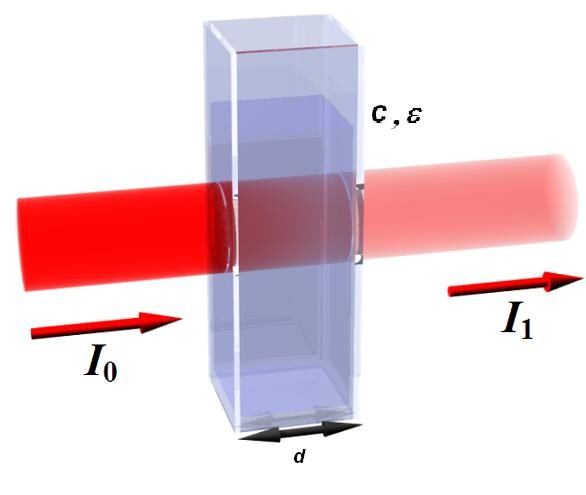
The most common thing is that the sensors of commercial CO2 meters use infrared (Non-Dispersive Infrared), a very common and consolidated gas detection method for those that contain more than one type of atom, as is the case of carbon dioxide. , carbon monoxide, methane, or sulfur dioxide.
Without going too deep, the operation is based on the different energy absorption of the compounds for this specific wavelength. Thus, carbon dioxide is a gas that absorbs infrared radiation characteristically and differentially.
The meter consists of an infrared light sensor and receiver that sends a beam with the CO2 absorption wavelength and receives it back in an attenuated form. The difference between what is emitted and what is received is the energy absorbed and this is proportional to the concentration of the gas according to the Beer-Lambert law.
From this point and taking into account that this guide to CO2 meters is aimed at a non-technical audience, we will look at:
-
If it only measures carbon dioxide or it also measures other parameters such as humidity, temperature, or particulate matter, which also have an impact on our health.
-
The precision and resolution in its measurements, the latter being the smallest readable unit or detection limit. In the domestic sphere, it is rare for data relating to precision to be offered, but if so, it is usually a good sign.
-
The ease of use. A good screen makes use more comfortable, as long as the interface is clear and supports customizations such as changing languages. However, in this use scenario, those that use icons such as smiling faces or traffic light-style color codes to make it more intuitive are especially interesting.
-
Notifications and data logging. Some models not only measure CO2 at the moment but also store the data to know its evolution. Likewise, some warn with acoustic and/or visual alarms when the set value is exceeded.
-
Portability. The most common thing in this use scenario is that these are devices that can be left fixed in one place (although we can move them), although those used in technical measurements are more portable.
-
Connectivity and compatibility with home automation. Some models aimed at the domestic environment allow us to connect them to our “smart” home so that processes such as notifications can be automated or even other smart devices come into action.
Featured models
Note: in the domestic sphere it is common for us to find instruments to control air quality instead of only measuring CO2.
Leotec
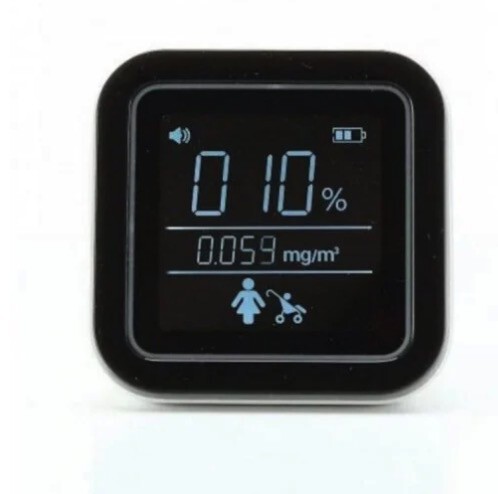
If you are looking for something compact, easy to use, and cheap, this Leotec model ( 21.99 euros ) is a good candidate. It monitors the level of C=22 indoors, temperature, and humidity level in real-time, it works either on batteries or by cable, its panel is in color, and offers visual and audible warnings when the CO2 level exceeds 1000PPM.
Phasak JD 3002
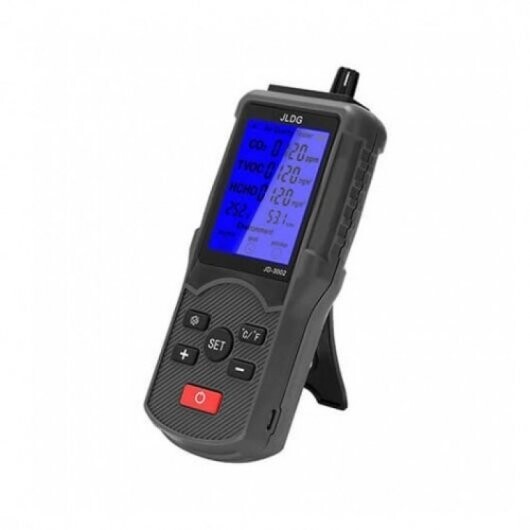
Although most of the CO2 meters listed are designed to be used statically, this Phasak JD 3002 ( 53 euros ) is a compact and portable model to carry from one place to another and offer, among others, measurements of humidity, temperature, compounds volatile organics and also CO2. It comes with a briefcase to carry it from one place to another, it runs on a battery and its screen is monochrome with a very classic interface. Simply configure the alert data to receive warnings when they are exceeded.
Netatmo Healthy Home Coach
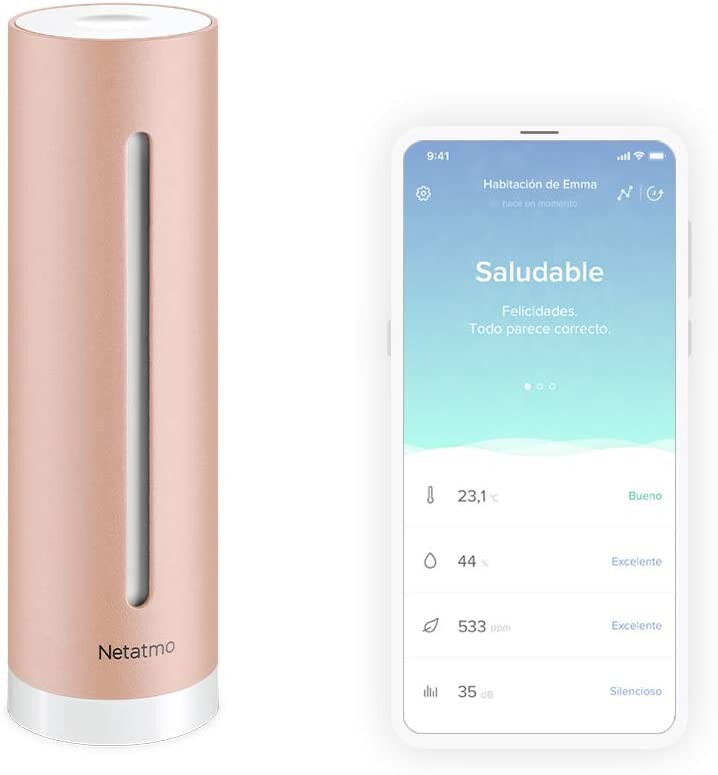
For those looking for a solution for air control in the connected home (compatible only with the Apple HomeKit ecosystem), intuitive and easy to use, the Netatmo Healthy Home Coach ( 59 euros ). With a very compact and minimalist design, we will have to turn to our mobile phone to see the recorded data of temperature, humidity, noise, and CO2 in an attractive interface.
Visiotech MT-CO2
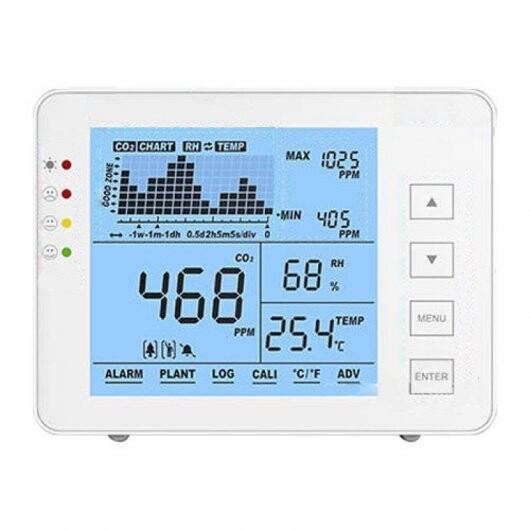
Monocolor screen with a very classic aesthetic that of the Visiotech MT-CO2 CO2, temperature, and humidity meter ( 92 euros ) capable of storing data for up to a week and displaying it on its graph. Carbon dioxide measurement accuracy of ±50ppm or ±5% of reading
PCE-CMM 10
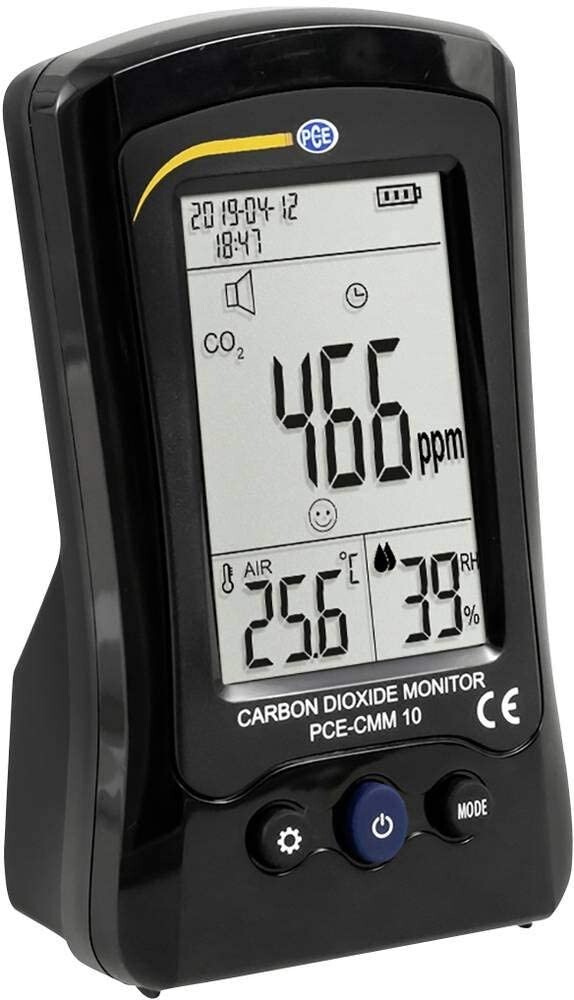
If you are looking for a more precise instrument to measure CO2, this brand has a wide catalog of specialized solutions, including this model.
The PCE-CMM 10 ( 264 euros ) simultaneously measures the concentration of C02, temperature, and humidity of the air and has an audible alarm when it exceeds the carbon dioxide threshold, although you can see it on its simple but functional mono-color screen.
Thanks to its USB port you can upload data to your computer the old-fashioned way or use an SD card. Among its strong points for home use, are its resolution and precision, with a range between 400 – 5000 ppm, a resolution of 1 ppm, and a precision of ± 5% + 50 ppm.
Airthings Wave Plus Smart Radon
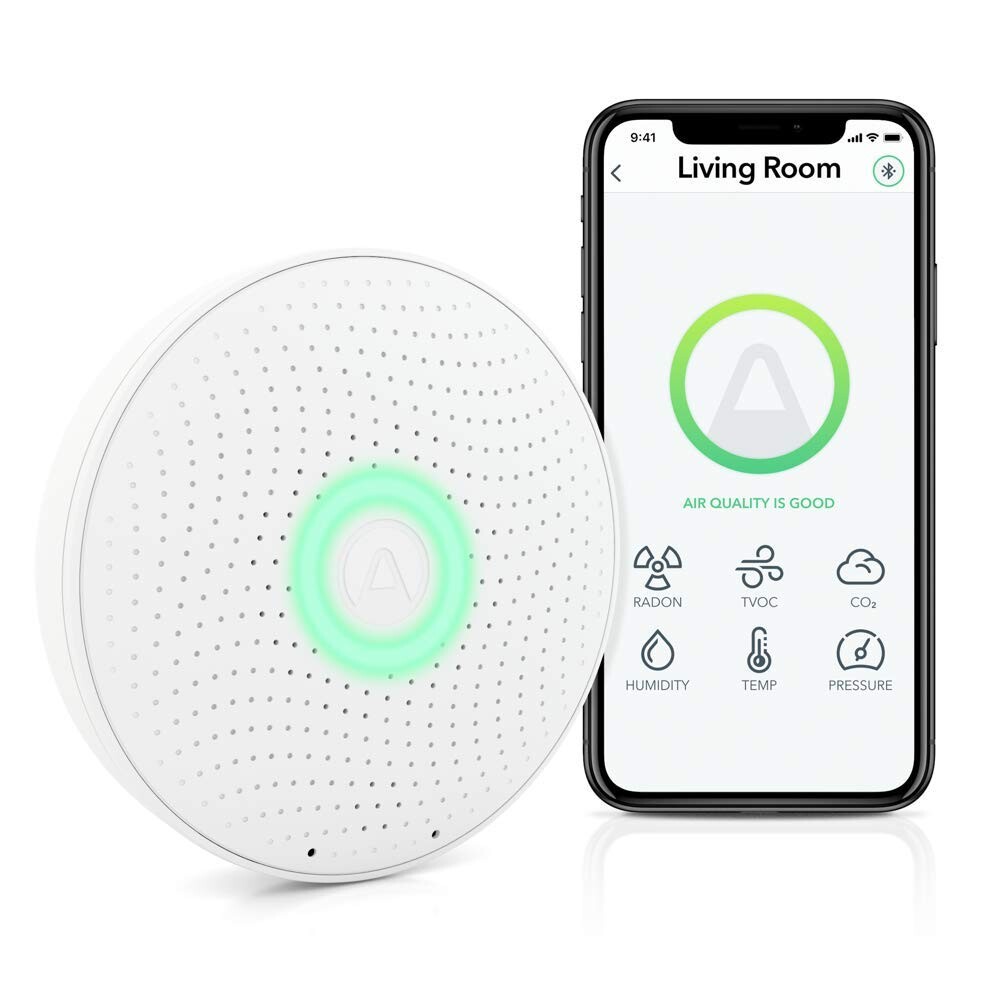
The Airthings Wave Plus Smart Radon ( 229 euros ) is a complete and discreet air quality meter that has sensors to measure carbon dioxide, volatile organic compounds, temperature, humidity, air pressure, and even radon, data that you cannot see on its discreet measuring device, but in its application, where you will receive air quality notifications, data updates and low battery power. Color-coded to make it more intuitive.
If you only want to use it with your mobile, it connects via Bluetooth, but if you are going to use it with the Google and Amazon ecosystems, then it requires a hub ( 81 euros )
Awair
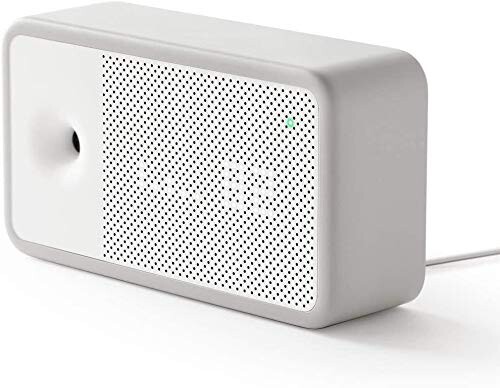
With a very attractive and minimalist aesthetic to leave it visible in the home, Awair also measures humidity, temperature, carbon dioxide, and fine dust, among other measurements. The design of the app is on par with the device, beautiful and elegant as well as intuitive. Price on Amazon: 149 euros.

Sharlene Meriel is an avid gamer with a knack for technology. He has been writing about the latest technologies for the past 5 years. His contribution in technology journalism has been noteworthy. He is also a day trader with interest in the Forex market.











